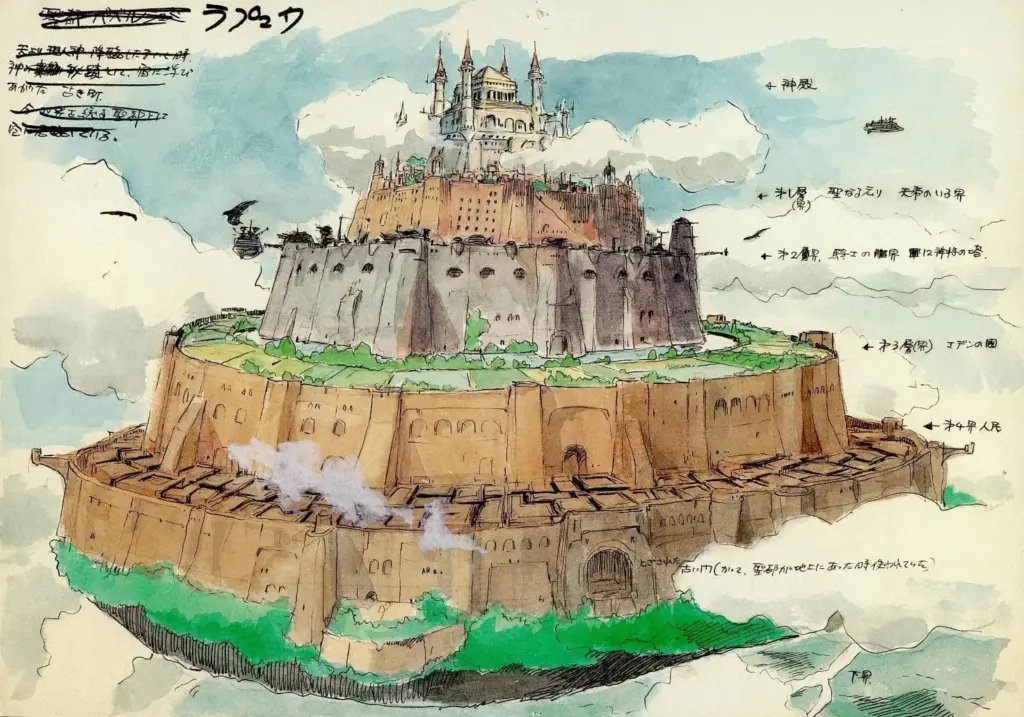Today, at BestTripTips we will discover a small town in Lazio called Civita di Bagnoregio.
Nestled in the picturesque region of Lazio, Italy, lies Civita di Bagnoregio, a charming hilltop village with a unique story and breathtaking views. Known as “The Dying City,” Civita di Bagnoregio captivates visitors with its medieval allure and precarious existence atop a crumbling rock formation.
The Secrets of Civita di Bagnoregio – Dying City
Civita di Bagnoregio, affectionately known as “The Dying City,” is a hidden gem tucked away in the heart of Central Italy. Perched precariously atop a steep rock formation in the Calanchi Valley, this historic village invites adventurers to meander through its winding alleys and uncover its concealed treasures. Accessible solely by a suspended footbridge that spans the chasm separating it from the world, Civita di Bagnoregio is where time seems to stand still, offering a glimpse into Italy’s rich cultural heritage.
Civita di Bagnoregio: A Vanishing Gem
Situated about 87 kilometers from Rome, Civita di Bagnoregio is a diminutive settlement with a rich history. Its moniker, the Dying City, evokes curiosity, prompting us to delve deeper into its story. The village overlooks the valley, offering panoramic views of the unique formations sculpted by the relentless passage of time and the clayey soil erosion. However, erosion isn’t confined to the valley alone; the land upon which Civita di Bagnoregio stands is gradually sinking, too, hastening its inevitable disappearance. Constructed entirely from tuff, a highly friable rock prone to crumbling over time, Civita di Bagnoregio is a poignant reminder of the transient nature of human endeavors. With only eleven inhabitants, Civita di Bagnoregio is a surreal juxtaposition of past and present, its existence in a delicate balance.
A Glimpse into History: Civita’s Ancient Origins
Despite the worrying premise, Civita di Bagnoregio preserves the world’s charm, and its destiny makes every visit even more unique. Civita di Bagnoregio, founded 2,500 years ago by the Etruscans, is a testament to ancient engineering. The birth of this place belongs to the Etruscans; the first evidence dates to the 6th century when the city was Bagnorea. The city’s urban layout, characterized by intersecting roads known as cardo and decumanus, reflects Etruscan and later Roman influence. While its architectural veneer reflects Medieval and Renaissance periods, remnants of its Etruscan past endure, notably in the San Francesco Vecchio area, where an Etruscan necropolis was discovered. Etruscan engineering prowess is evident in structures like the “Bucaione,” a tunnel providing direct access from the city to the valley below, demonstrating early efforts to mitigate geological challenges. Despite seismic and erosion threats, the Etruscans implemented extensive water management systems; the Romans continued upon their arrival in 265 B.C.
Civita’s Post-16th Century Shift
The city’s fortunes took a significant turn in the 16th century when it came under the control of Pope Alexander VI, facilitated by Charles VIII’s intervention. This event marked a pivotal moment in Civita’s history as it transitioned from local autonomy to papal authority, altering the socio-political dynamics of the region. The ensuing centuries saw Civita facing formidable challenges, notably the devastating earthquakes of the 17th and 18th centuries. These seismic events and ongoing environmental pressures severely affected the city’s infrastructure and population. The earthquakes, acting as a catalyst, precipitated the gradual departure of inhabitants from the city center, leaving behind a landscape scarred by nature’s forces.
Exploring Civita’s Legacy: Hidden Gems and Cultural Delights
Civita has inspired artists, writers, and filmmakers with its captivating landscapes and enigmatic aura. From its picturesque vistas to its labyrinthine streets, Civita di Bagnoregio is a muse for creative minds seeking inspiration in its timeless charm. Despite the small number of inhabitants, Civita seems to have found a new life in its abandonment: almost 1 million tourists visit the town yearly, listed among “The most beautiful villages in Italy.” In the spring of 2017, a process to preserve the town’s cultural heritage and natural beauty was started by applying for UNESCO World Heritage status.
Films, Art and Religion
Many films have been shot in this little village, but one stands out worldwide, Pinocchio (2009). During peak tourist day, the “Antica Civitas” is open for visitors, offering a glimpse into some furnished Etruscan caves adorned with typical utensils. The admission fee is merely 1 euro; you can see the location of the Pinocchio film. Civita is full of caves, and at the start of the bridge, you can find “Grotta di San Bonaventura.” This cave has a vital religious significance as ancient documents tell us Saint Francis passed through here.
But Civita di Bagnoregio is not only famous throughout the world for its unique shape and its fascinating appearance. The film also inspired a great animator and attracts tourists from Japan annually. We are talking about Hayao Miyazaki, who drew inspiration from Civita’s ethereal beauty for his animated film “Laputa: Castle in the Sky,” imbuing the village with a sense of whimsy and wonder that continues to captivate audiences worldwide.

Visiting Civita: Points of Interest
Undoubtedly, the panoramic terrace is the most iconic place to visit in Civita di Bagnoregio. Civita is connected by a 300-meter reinforced concrete bridge constructed in 1965. The Germans destroyed a previous bridge in 1944 during World War II. By crossing the bridge, you can capture magnificent photos of the location, which could give you sensational scenery when the fog meets the village early in the morning.
- Porta di Santa Maria: notably, Porta di Santa Maria, attributed to the renowned architect Vignola, stands as a symbolic landmark of Civita, adorned with two bas-reliefs depicting a lion firmly grasping a man with its claws. Porta Santa Maria is the sole remaining gateway into Civita, offering a picturesque entrance into the town. With its origins tracing back to Etruscan times, the door was initially hewn into the tufa rock and known as “Porta Cava,” a testament to its excavated origins. Over time, a church dedicated to Mary was erected adjacent to the gate, leading to its renaming as Porta di Santa Maria.
- Piazza San Donato: Piazza San Donato (Saint Donato Square) is undoubtedly a unique case, as it features a surface of gravel and soil rather than the typical pavement. This unconventional flooring gives visitors the sensation of being transported back by at least 400 years. Overlooking this square is the church and the ancient town hall. The Palio della Tonna, a medieval festival where jockeys compete in a thrilling ring race, takes place every year in June.
- Cathedral of San Donato: Civita di Bagnoregio boasts many monuments, including the Cathedral of San Donato, the village’s primary church, dating back to the 7th century. The cathedral has undergone multiple renovations, including a significant redesign in 1511 by Nicola Matteucci. A magnificent wooden crucifix from the 15th century is housed within its confines, adding to its allure.
- Geological and Landslide Museum: Among the natural wonders of Civita di Bagnoregio are the surreal clayey Calanchi formations, which have spontaneously formed over the centuries. You can explore these and other marvels of nature at the Geological and Landslide Museum, which is open on Fridays, Saturdays, and Sundays from 10 am to 5:30 pm.
Visiting Civita: Cultural Events Over the Year
A renowned event we have already mentioned is the Palio della Tonna. This traditional event occurs twice a year: on the first Sunday of August and the second Sunday of September. Donkeys compete in the main square of the village during this event. The regulations dictate that each jockey must complete three circular laps of the square – hence the name Palio della Tonna, which translates to “round” in the local dialect – and then participate in a series of other races. The top two jockeys will compete in the final race.
Every year, on December 26th and 30th, and January 1st, 6th, and 7th, the Living Nativity (Presepe vivente) is organized. Evocative and thrilling, the Living Nativity of Civita di Bagnoregio is a journey through ancient crafts. Visitors may encounter shepherds with flocks of sheep, carpenters, blacksmiths, bakers, weavers, and stonemasons. Many scenes of real life are reconstructed against the backdrop of one of Italy’s most beautiful villages. “The Dying City” is indeed the perfect setting for this representation. Its alleys, squares, and ancient buildings create a magical backdrop for the Nativity scene. Seeing characters in period costumes traversing the village’s streets in the enchanting Christmas atmosphere is truly an indescribable experience.
Civita di Bagnoregio’s Summer and Fall Festivals
The last two weeks of July and the first two weeks of August are dedicated to Civit’Arte, a series of events celebrating art in all forms. Prominent Italian and international figures are invited to perform at these events.
Like many other towns in Lazio, Civita di Bagnoregio hosts the Chestnut Festival (Sagra della Castagna) in October. This event allows visitors to discover local products and culinary traditions.
And finally, another summer event celebrates cinema through an exhibition dedicated to its unique ability to blend direction, acting, editing, writing, music, art, and photography inextricably.
Civita’s Unique Approach to Tourism
In response to its growing popularity, Civita di Bagnoregio introduced a symbolic €1.50 entrance fee in 2013, becoming the only town in Italy to charge for access. Despite initial concerns, the fee has not deterred visitors and has contributed to the town’s economic sustainability. Visitors are now required to pay €3.00; on Sundays or holidays, they are asked to pay €5.00. Tourism revenue has enabled communal taxes to be abolished, improved local services, and created employment opportunities, transforming Civita’s fortunes. Despite welcoming over 1 million visitors annually, Civita requires ongoing maintenance, leading to the implementation of an entrance fee. This approach mirrors Venice’s strategy since 2024 to manage mass tourism during peak periods.
In the 1960s and 70s, there was a fleeting moment when it seemed newcomers might settle in Civita, attracted by its picturesque charm. However, this endeavor faltered due to the need for more essential services. Anthony Costa Heywood, an American architect, has been among the few permanent residents since 2003.
Your Unforgettable Italian Escape awaits!
Civita di Bagnoregio is a testament to Italy’s rich cultural heritage and resilience against the passage of time. Despite its challenges, this enchanting village continues to captivate visitors from around the globe with its picturesque charm and historical significance.
From its ancient origins as an Etruscan settlement to its medieval independence and subsequent transformation under papal rule, Civita’s history mirrors the broader tapestry of Italy’s past. The city’s survival through centuries of seismic upheavals, political shifts, and environmental challenges is a testament to the ingenuity and fortitude of its inhabitants.
As we bid farewell to Civita di Bagnoregio, we carry with us not only memories of its storied past but also a profound appreciation for the indomitable spirit of its people. May Civita’s legacy endure for generations to come, a beacon of hope and inspiration in an ever-changing world.
We extend a heartfelt invitation to experience the magic of Civita di Bagnoregio firsthand. Traverse its ancient cobblestone streets, marvel at its breathtaking views, and immerse yourself in the unique atmosphere of this “dying city” come to life. Whether drawn by its fascinating history and stunning architecture or simply seeking a tranquil retreat from the hustle and bustle of modern life, Civita di Bagnoregio promises an unforgettable journey filled with wonder and discovery. Embrace the timeless beauty of Civita di Bagnoregio: your unforgettable Italian escape awaits! Visit Civita’s website here.













